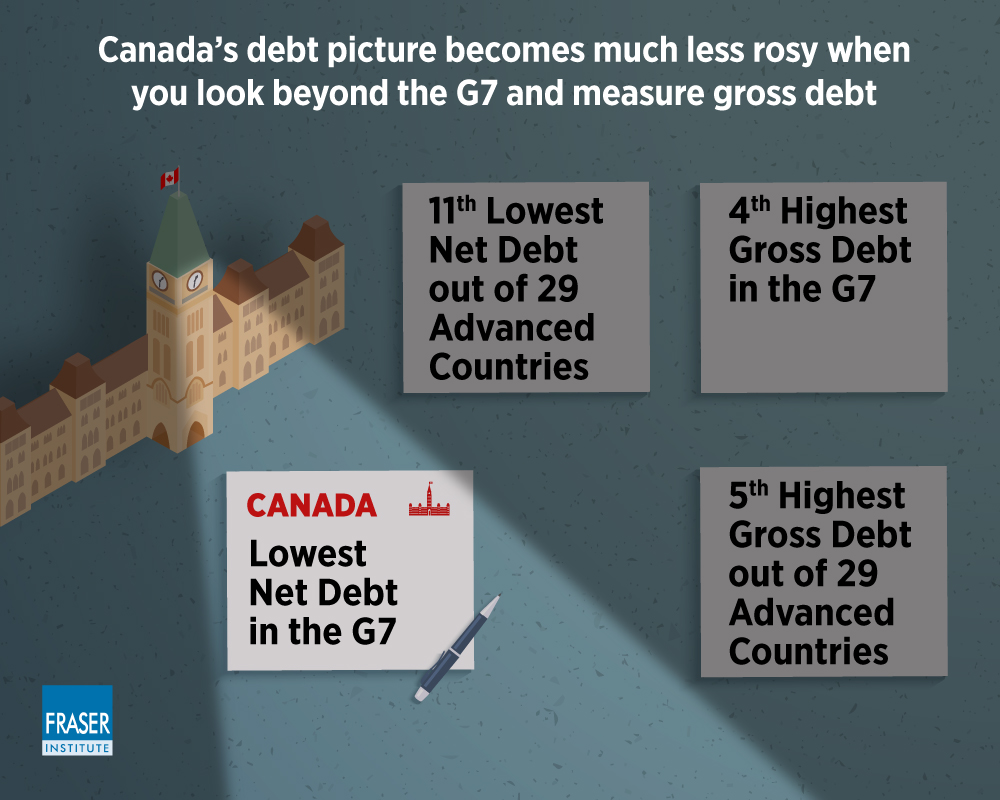And the assets of the Canada Pension Plan and Quebec Pension Plan play a key role in improving how things appear

The huge debts built up by governments worldwide in the last 15 months almost certainly mean future pain for individuals and businesses once officials start to pay it down – plus the cost of servicing the debt in the meantime.
The relative positions of major economies’ debts are often used to reflect how good or bad each country’s debt burden is. But this is flawed in Canada’s case, according to Jason Clemens, executive vice president of the Fraser Institute and co-author of Caution Required When Comparing Canada’s Debt to that of Other Countries.
Clemens says that, because Canada’s net debt – gross debt minus financial assets – includes the $488 billion (March 2020) assets of the Canada Pension Plan and Quebec Pension Plan, things look rosier than they are.
“The idea that the assets of the Canada and Quebec pension plans are available to governments and should be counted against the debt distorts the gravity of Canada’s indebtedness,” Clemens said.
He added that, while the federal government asserts that Canada’s net debt relative to GDP is the lowest in the G7, the ranking slips to 11th when a wider set of countries – such as Australia and many European nations - are included.
Total debt tells a worse story
If total (gross) debt, rather than net debt, is considered, Canada falls to 25th out of 29 countries, the 5th highest total debt in the industrialized world.
“Even within the narrower G7, Canada falls from first to fourth in its debt ranking when total debt rather than debt after financial assets are measured,” commented Clemens.




